Khamenei’s Trusted Cleric Gunned Down In Northern Iran

A former Khamenei aid associated with the mass executions of the 1980s has been assassinated in the northern city of Babolsar.

A former Khamenei aid associated with the mass executions of the 1980s has been assassinated in the northern city of Babolsar.
Ayatollah Abbas-Ali Soleimani, the former representative of the Supreme Leader in Sistan and Baluchistan province and Kashan, was gunned down in Mazandaran province, according to the Hozeh website on Wednesday.
Soleimani's son confirmed his father’s death though said he does not know the details of the armed attack yet.
An eyewitness told Hozeh website that the cleric was sitting in a bank when the assailant grabbed the gun of the guard and opened fire. Reports say three others were also injured.
Soleimani's body being carried out of the building where he was killed
The attacker was reportedly arrested by the security forces. The assailant was reportedly one of the bank’s guards, identified only as Habibian.
The hardliner cleric was twice a member of Iran’s Assembly of Experts. As Friday prayers imam of Babolsar, he allegedly participated in the mass executions in the 1980s.
He wrote in his autobiography that he was appointed the Friday prayer imam of Babolsar so that he could confront opposition groups activities there. During his term, he also supervised the judicial system in Babolsar.
The moment the gunman opens fire
The executions in the 1980s were carried out based on a fatwa by Iran's then-supreme leader, Ruhollah Khomeini, against the MEK which carried out a wave of bombings in Iran and struck an alliance with Saddam Hussein during the 1980-88 war.
Most victims were linked to the MEK but there were also others with links to leftist and secular groups such as Fadaiyan Khalq Organization (FKO) and Tudeh Party as well as some Kurdish groups, such as Komala and the Kurdish Democratic Party of Iran.
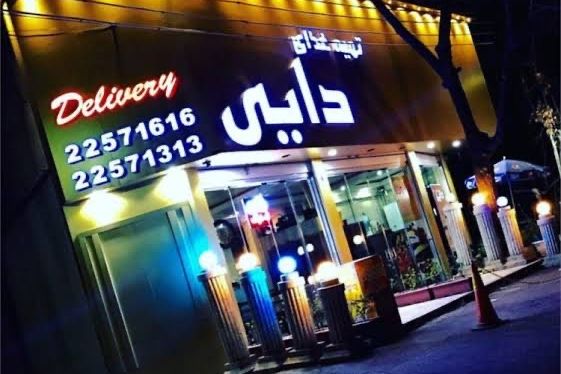
Authorities in Iran stepped up their campaign against the mass hijab rebellion, warning to shut down several businesses belonging to celebrities and footballers.
Lists of celebrities targeted for not enforcing hijab laws were published by Revolutionary Guards (IRGC) media, Tasnim and Fars, the latest crackdown on famous names who have also been punished by bank account freezes, travel bans, pay cuts and communications shutdowns.
Some of those named include restaurants and cafes belonging to football legend Ali Daei, actress Bahareh Rahnama, actor Mohammad Golzar, footballer Karim Bagheri and football coach Alireza Mansourian, all in the capital Tehran.
Fars has run several campaigns against those refusing to wear the compulsory Islamic headscarf in restaurants and shopping centers in the past few months and urged the authorities to shut them down.
Tasnim also said Baccarat Lounge, a restaurant owned by the national soccer team coach Amir Ghalenoei has already been shut down because its staff did not abide by the hijab rules.
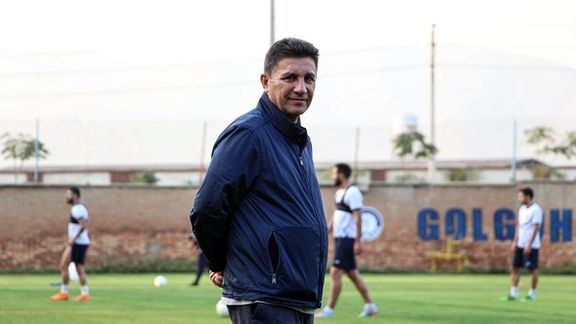
In its report, Tasnim claimed that “all citizens” appreciate and support authorities’ actions against infringers and that no exception was being made for celebrities who have become a legitimate and powerful voice for the protesters.
A few hours later, Tasnim reported that one of the capital’s newest shopping malls, Opal Mall, was shut down because its board of directors had ignored “repeated warnings” to prevent uncovered women from entering the mall.
A wave of Iranian sports and cinema celebrities have used their social media accounts to voice their support for the protests that began in mid-September following the death of a 22-year-old girl, Mahsa (Jina) Amini in the custody of morality police.
Amini was arrested for what the authorities deemed ‘inappropriate’ wearing of the hijab. Since then, the hijab rebellion has grown to levels too worrying for the religious and political establishment who consider defiance of the hijab equal to defiance of the regime itself.

Some outspoken celebrities including actress Taraneh Alidoosti and Katayoun Riahi were arrested or came under various pressures including foreign travel ban during the protests.
Riahi, 61, was the first among Iranian female artists to express her solidarity with the Mahsa Movement by sharing her photo without a veil on Instagram. “Iranian women are each other’s voices,” she said in her post.
The police said Monday that Riahi, who was put on trial in January for supporting the protests, and Pantea Bahram, who recently attended an event unveiled, have been indicted for hijab defiance.
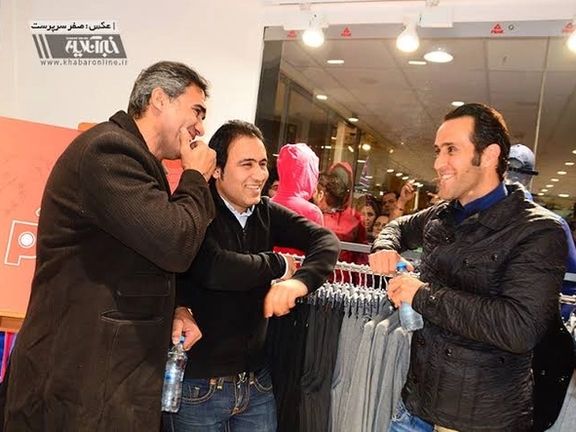
Daei and other legendary soccer players including Mehdi Mahdavi-Kia, Karim Bagheri, Ahmad Reza Abedzadeh, and others who supported the protest movement have also been subjected to similar pressures.
In December authorities forced a Dubai-bound Mahan Airlines plane to land in its Kish Island to prevent Daei’s family from leaving the country. Daei is a hero for Iranians as he was an international soccer legend and the captain of the national team from 2000-2006 whose record of 109 international goals was broken only 2021 by Cristiano Ronaldo.

Many other artists and athletes, including popular Golab Adineh and Fatemeh Motamed-Aria have also refused to wear the hijab in public and published photos of themselves without the hijab on social media. The regime feels if they do not crack down on such defiance, it will create an unstoppable wave amongst society.
At the start of the month, Supreme Leader Ali Khamenei reiterated the regime's stance on hijab, which became mandatory after the start of the regime in 1979. He said: “Discarding hijab is haram based on Sharia and also politically." His declaration was a clear signal to authorities that they need to do anything it takes to re-establish control over women and re-impose the hijab rules.
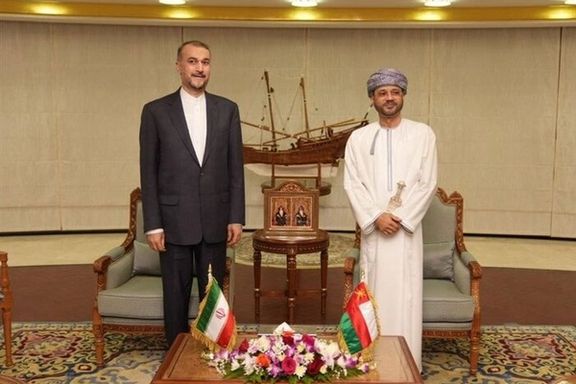
Iran’s foreign minister Hossein Amir-Abdollahian during a visit to Oman has discussed the conflict in Yemen and the status of Iran’s nuclear talks with the West.
Iran’s official news agency IRNA reported Wednesday that Amir-Abdollahian met with Oman’s foreign minister Sayyid Badr Albusaidi and thanked him for mediation efforts by Sultan Haitham bin Tariq and the government of Oman “for their positive role” in JCPOA nuclear talks.
IRNA quoted Amir-Abdollahian as saying, “In addition to issues relating to expanding relations, I discussed regional issues with my Omani counterpart, as well as international problems, such as Palestine, Yemeni reconciliation and the situation in Sudan.”
IRNA commented that Oman has played an important role in Iran’s nuclear talks, “exchange of prisoners between Iran and the West”, and contacts between Iran and Saudi Arabia.
Oman has long played a mediating role between Tehran and Washington. First contacts in 2013 to launch nuclear talks were facilitated by Oman.
Meanwhile, Russian foreign minister Sergei Lavrov visiting the United Nations in New York, told reporters during a news conference on Tuesday that the revival of the JCPOA nuclear deal does not depend on Russia, China or Iran, indirectly accusing the United States for freezing talks.
The European Union presented a compromise agreement draft to Iran and Western powers last August, after 18 months of talks, but the United States accused Iran of stonewalling and presenting “extraneous” demands. In October, Washington said it is not focused on the talks any longer, demanding that Iran stop weapons supplies to Russia, among other things.
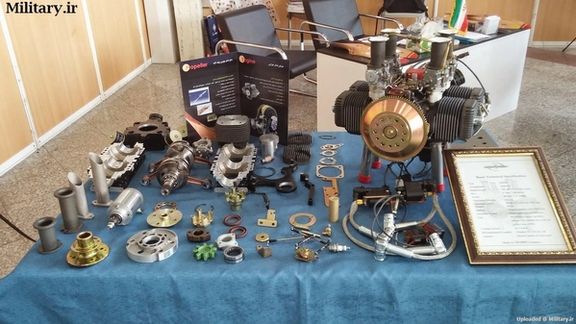
Two years since Myanmar’s military coup, widespread violence continues to escalate across the country, with growing indications and accusations of Iranian support to the junta.
Myanmar has been plagued by conflict and instability for decades. The country is home to multiple ethnic groups, many of which have been in conflict with the government. The situation has been further complicated when on Feb. 1, 2021, the Myanmar military, or Tatmadaw, deposed the democratically elected government led by the National League for Democracy.
The coup triggered countrywide protests that were followed by a crackdown leaving hundreds of civilians dead and several thousand detained.
As resistance to the junta continues, international research organizations, including the Center for Strategic and International Studies, have been suggesting that the Myanmar military has deployed a fleet of Chinese-made unmanned aerial vehicles to identify and locate potential targets.
Chinese drones have been used by the Myanmar military since 2015 to support counterinsurgency operations in the country’s restive north. But the unrest following the 2021 coup has increased demand for their use and for their spare parts, especially engines, which are widely believed to have been purchased from Iran.
“The engines were requested shortly after the coup, because some of the drones were showing the signs of wear and tear ... All the talks were with the Iranians,” Capt. Nyin Nyin Wai, a Myanmar army defector, told Iran International.
He said “there was a lot of back and forth” in the talks and it took a long time until the engines were delivered, but before leaving the military in December 2022, he saw documents confirming that Iranian parts had been ordered.
“I was in the meetings, and I saw the papers,” he said. “It was MD550.”
The MD550 is a drone engine that is reverse-engineered from a prototype designed in the 1980s by the German company Limbach.

The Washington DC-based Wisconsin Project on Nuclear Arms Control and the US watchdog United Against Nuclear Iran believe it is produced by Iranian manufacturer Oje Parvaz Mado Nafar Company or MADO.
“It’s a strong claim. There are several credible sources,” UANI research director Daniel Roth told Iran International.
“It’s a little confusing because the original engine is made by Limbach (the L550E), and the MD550 is described as a ‘Chinese copy.’ The collected evidence suggests that it’s now probably made by both China and Iran — but mainly Iran.”
A January report by UANI, an analysis of the Iranian National Aerospace Exhibition showed photographs of the MD550 engine being displayed at the show in Tehran in 2012 — a year after MADO was established.
The company has been subject to US sanctions since October 2021.
According to the former army captain Nyin, the MD550 engines were supplied as replacement parts to the Myanmar Air Force, and repairs were conducted in the Meiktila Air Base Park in the Mandalay area of the country’s north.
It is unclear when exactly the first engines reached Myanmar from Iran, but early last year, data from flight tracker Flightradar24 showed Fars Air Qeshm — an Iranian cargo airline sanctioned by the US for carrying weapons and fighters to Syria — flying to Yangon from Mashhad, Iran’s second-largest city.
Since then, increased drone activity has been reported in the areas of Myanmar where the anti-junta opposition has been concentrated.
“Surveillance drones are used to learn where to target next,” Nyin said. “The focus was on Karen State, Sagaing Division, Mandalay area, Bago region.”
Rights activist Nicky Diamond from the Southeast Asia-based NGO Fortify Rights has experienced first-hand the surveillance drones flying in the mountainous areas of the eastern Karen State in March and June 2021.

“China’s weapons and Iranian supplies are instrumental in oppressing revolutionary forces on the ground,” he said.
“Iran is under international sanctions, and it’s concerning that they are able to supply drones ... It’s a reminder that we need to do more to prevent the flow of weapons to conflict zones ... The issue of drone supply from Iran to Myanmar is a cause for concern and must be addressed to ensure the safety and security of the people.”
The situation in Myanmar is complex, and the Iranian regime’s support for the Myanmar junta is just one of the many issues that complicate it further, with the potential to make the already volatile circumstances even more dangerous.
Myanmar’s government in exile, the National Unity Government, has been raising concerns about the junta’s ties with Iran, as likely to further destabilize the country and lead to more violence.
“We are aware of the military relations between Iran and Myanmar military junta since the coup,” Naing Htoo Aung, spokesperson of the NUG Ministry of Defense, told Iran International.
“Myanmar military’s campaign of terror against its citizens is being aided by a country like Iran, which not only makes the Iranian army or government accomplice but also poses a threat to regional and international security.”
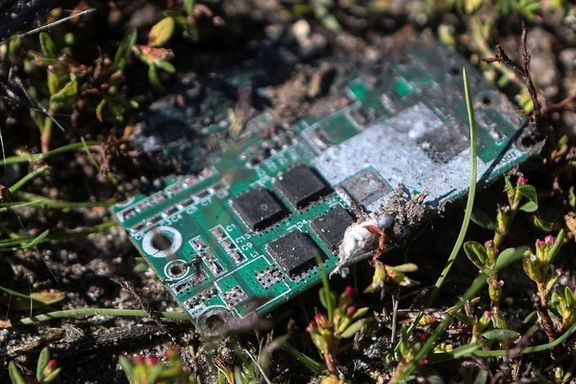
As the situation in Myanmar continues to deteriorate, the international community faces a difficult decision on how to respond to the junta’s actions. Until now, however, the UN has not imposed a binding arms embargo on Myanmar, despite calls from rights groups and the government in exile.
Special Envoy of the UN Secretary-General on Myanmar Noeleen Heyzer briefed the UN General Assembly on the situation on March 16, saying that the “violence continues at an alarming scale” and that “heavy fighting has spread to areas previously unaffected by conflict, putting more civilian lives at risk and further complicating humanitarian operations delivering lifesaving assistance.”
Heyzer said that 17.6 million people — about a third of the country’s population — are in need of humanitarian assistance, more than 1.6 million are internally displaced.
“Arms embargo to Myanmar military junta would be ideal to deter the junta’s killing of innocent citizens,” Naing Htoo Aung said.
“If arms embargo is not possible, then the UN and international community should seek to provide effective support to the resistance side to help them defend their lives.”
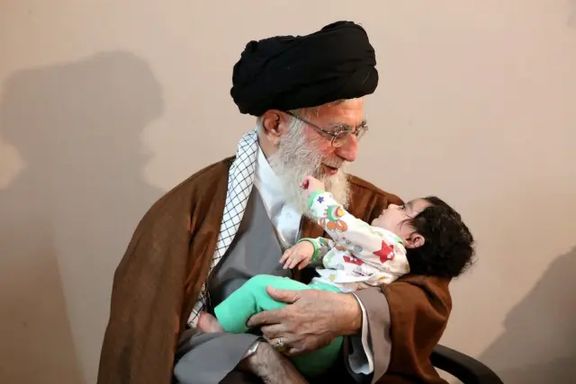
University professors who encourage their students to have children, are set to be promoted, according to Iran's ministry of science.
A new directive obliges universities to support “pregnant mothers” or those students who already have children. All universities and colleges in Iran are obliged to run majors like ‘home and family management’ for female students and content against childbearing is banned.
In spite of the regime's efforts to encourage people to have more children, it has failed to achieve its intended results due to the dire economic situation.
As it aims to raise childbirth rates, the Islamic Republic recently adopted strict abortion regulations. The childbirth rate in Iran has been steadily declining over the past few decades. In the early 1980s, the fertility rate in Iran was as high as 7 children per woman. This rate has since dropped to 1.9 per woman in 2019.
The health ministry claims more than 100 cases of illegal abortion have been sent to the judicial authorities and the doctors' offices are sealed.
The ban on abortion in Iran has made women go underground and often unsanitary centers are used to terminate pregnancies causing the death of many and lifetime complications in others. Each year, between 300,000 and 600,000 abortions are performed in the country. In 2017, Iran's maternal mortality ratio was 16 deaths per 100,000 live births.
Iran’s Supreme Leader Ali Khamenei believes efforts to increase the country's population are among the most urgent duties and essential policies of the Islamic Republic as one of the Shia countries in the Muslim world.
Parliament passed legislation last year to outlaw tubectomy, vasectomy, and the free dispensation of contraceptives other than where pregnancy would threaten a woman's health. Medical experts have warned that the legislation would increase sexually transmitted diseases by restricting access to condoms.

In its latest report, Human Rights Watch claims Iranian security forces have systematically murdered, tortured, and sexually assaulted children during the nationwide protests.
The rights group claims judges have barred children's families from hiring lawyers of their choice to defend them, and found Iranian authorities have arrested, interrogated, and prosecuted children in violation of legal safeguards.
Released Tuesday, the report details eleven cases of child abuse between September 2022 and February 2023. Children have been arrested and detained by security forces without informing their families.
In some cases, the students released from detention are barred from returning to school, or their families' social welfare has been cut off, forcing them to go to work.
Tara Sepehri Far, a senior Iran researcher at Human Rights Watch said: “Over the past seven months, the authorities have not hesitated to extend the coercive power of the state to silence even children.”
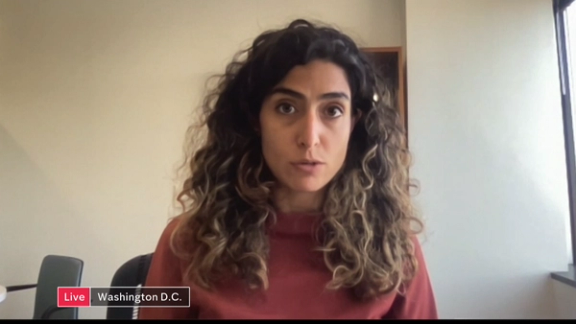
Detailing first hand accounts, one high school student said security forces set her clothing on fire, beat and whipped her, and pushed her onto a lit gas range during arrest. Another 17-year-old boy spoke of being brutally beaten and sexually assaulted.
According to the report, there have been numerous instances of torture, including the forcing of needles under a young boy's nails, the torture of two children to obtain information about their family’s whereabouts, and the torture of a 16-year-old who attempted suicide twice after being electrocuted, beaten, and sexually assaulted by interrogators.
Children injured by security forces have not been provided with medical care and their family members have been threatened to keep silent about the abuses.
Several rights groups, including Human Rights Watch, Amnesty International, and others, have documented widespread and violent repression of protests by the Iranian government, including the killing of children.
So far, well over 500 protesters -- including at least 69 children -- have been killed in regime crackdowns since the protests began in September, according to the Human Rights Activists' News Agency (HRANA).
Human Rights Watch called on the United Nations to act. In a statement, it said: “The United Nations Fact-Finding Mission on Iran should investigate these grave abuses against children as part of its broader reporting on the Iranian government’s serial human rights violations.”
Iranian law forbids prosecution and interrogation of children by anyone other than specialized children's prosecutors and youth courts. However, according to the report, a revolutionary court judge, a cleric, was co-appointed as a youth justice judge in one case involving 16 defendants, including three children.
Tweet unavailable